When the white stuff starts flying, a common refrain from those in snow-locked regions of the country is, “Are Pickup trucks good in the Snow?” This is essential information to have, especially if you need a truck for other reasons, but also want to be sure that you can get where you are going safely when it snows. We have researched this topic to get just this information for you.
Pickup trucks can be good in the snow, as long as they are all-wheel-drive or 4-wheel-drive, equipped with all-season or snow tires, and weight in the back. 2-wheel-drive pickups are not as good in winter weather as their drivetrain is usually in the rear, so there is limited control in the front of the truck where all the weight is, and room much power in the back end where it is light, which can lead to spinning or sliding in the snow and ice.
There is a lot to know about pickups and how to equip them for safe winter transportation.
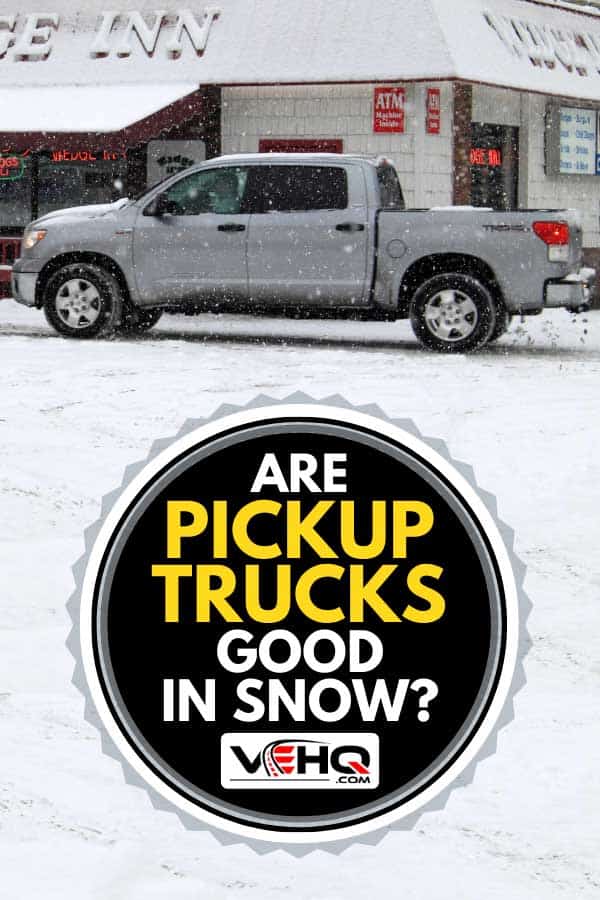
What Trucks Are Best in the Snow?
Long-bed, two-door models with two-wheel-drive are among the least traction-happy when considering a winter vehicle. But as pickups have shifted to family vehicles these days, single-cab trucks are much less in vogue. For nearly 20 years, the trend has shifted toward cabs with generous legroom for rear-seat passengers and has made beds smaller in recent years — meaning the weight distribution will even out a bit more if the cargo area suffers a bit.
These are the best pickups that someone in the snow belt may want to consider, based on what’s available from the factory along with other benefits pickup owners will glean from these vehicles.
Honda Ridgeline
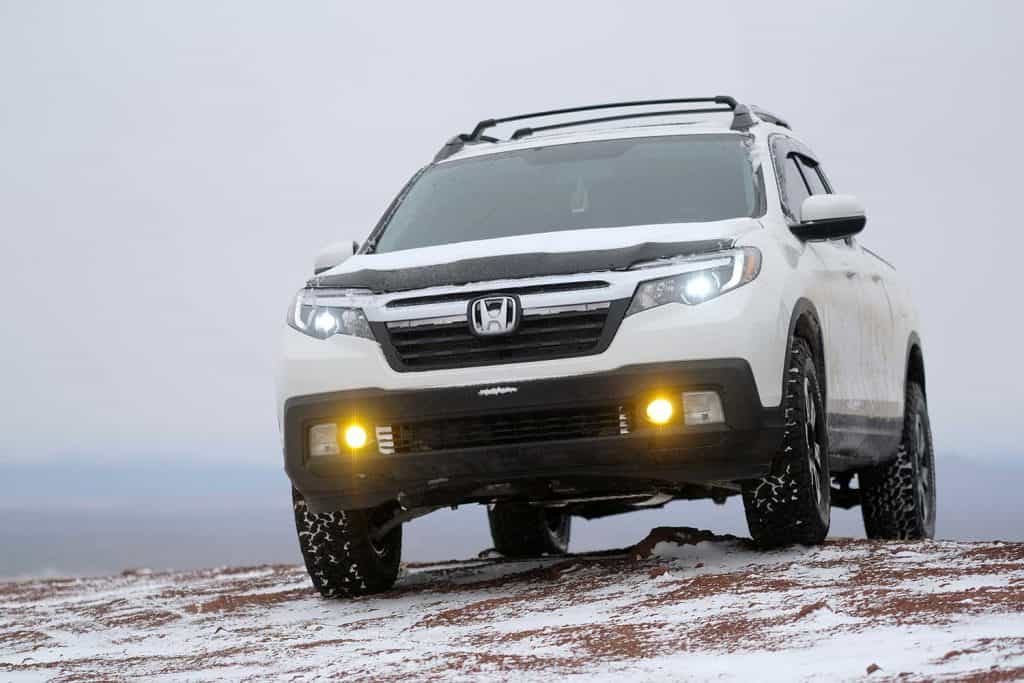
Non-traditional trucks like the Honda Ridgeline may be the ablest to handle the white stuff, with standard all-wheel-drive in a package that borrows much from its Odyssey and Pilot stablemates. They’re lighter and offer nearly as much utility as their traditional competitors without sacrificing comfort. That means a more controlled, car-like ride without the harsh leaf-sprung rear end.
Ford F-150 4x4
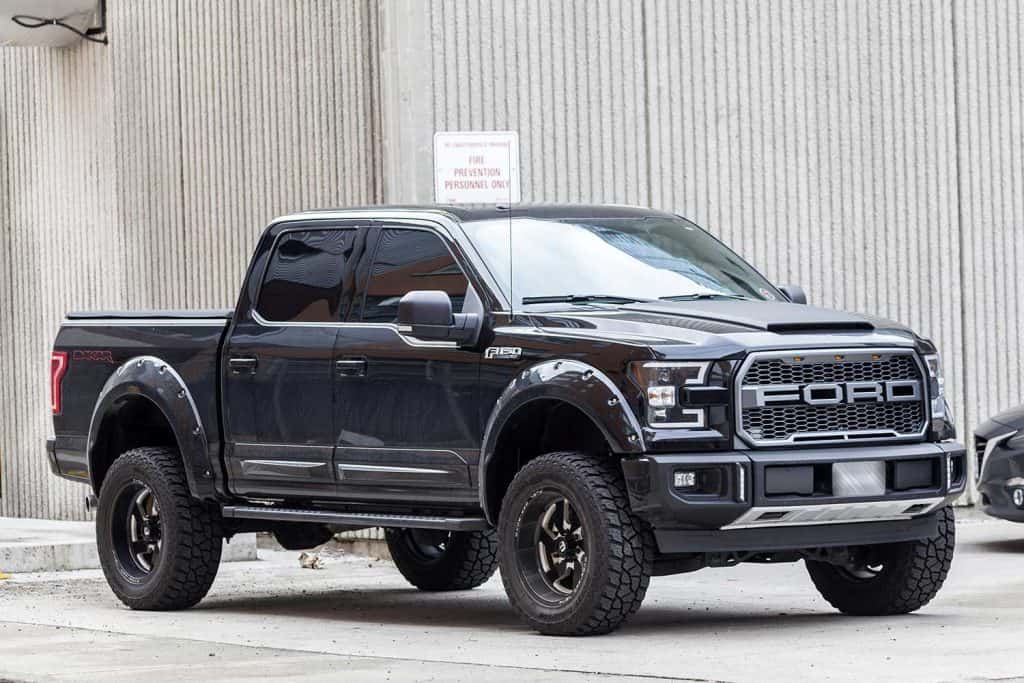
America’s best-selling vehicle — offered with several powertrain options — proves it’s still the king of the truck heap as it can be ordered nearly bare-bones or with enough creature comforts to give a Lincoln owner pangs of jealousy. With 4-wheel drive, it should be plenty capable in bad weather.
Toyota Tundra 4x4
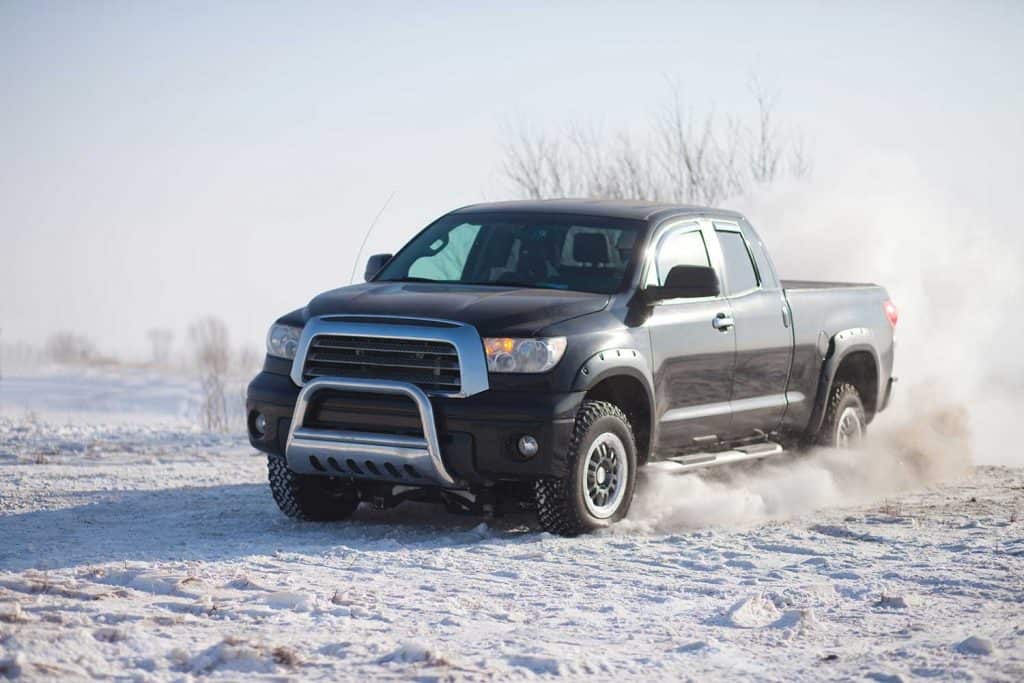
Toyota’s trucks have long enjoyed a reputation as some of the most durable vehicles on the road. And these trucks are offered with the TRD Pro package, which loads it up with knobby tires and as many off-road goodies as you’ll find outside of a SEMA show. But buyers of the garden-variety 4x4 can undoubtedly expect the truck to get them home in a blizzard.
Toyota Tacoma 4x4
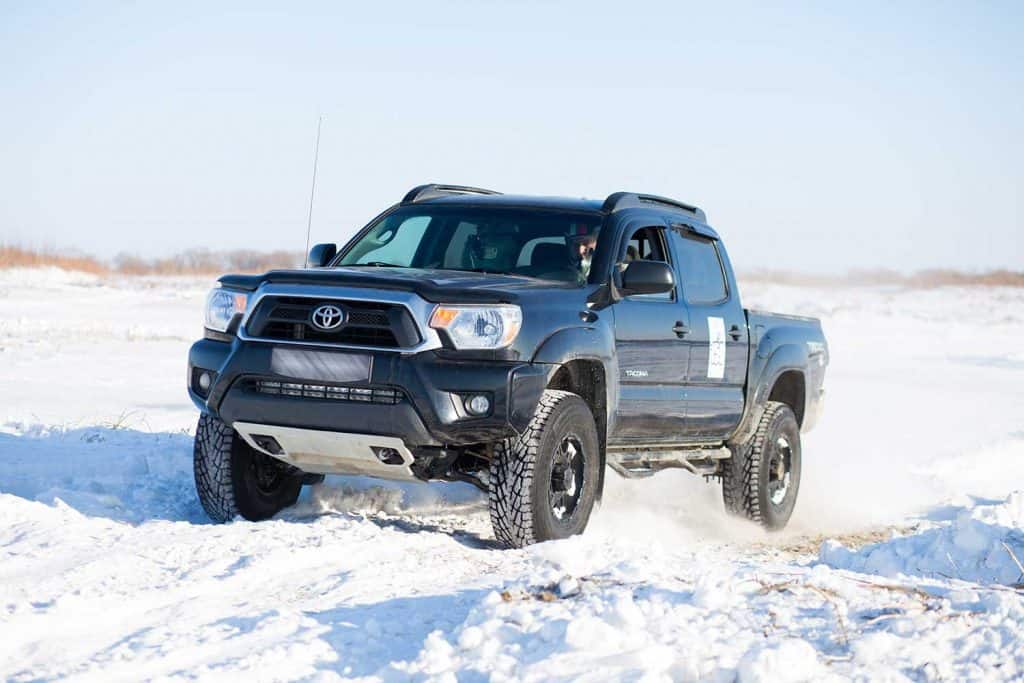
Like the Tacoma’s big brother, this vehicle comes with the TRD Pro package, but with a smaller footprint. It’s perfect for those who want pickup truck capability without the heft or size of a large vehicle. And beyond its stellar reputation for quality, it also has one of the highest resale values of any vehicle on the road. Like every other pickup here, this can come in a family-friendly four-door configuration.
Chevrolet Colorado
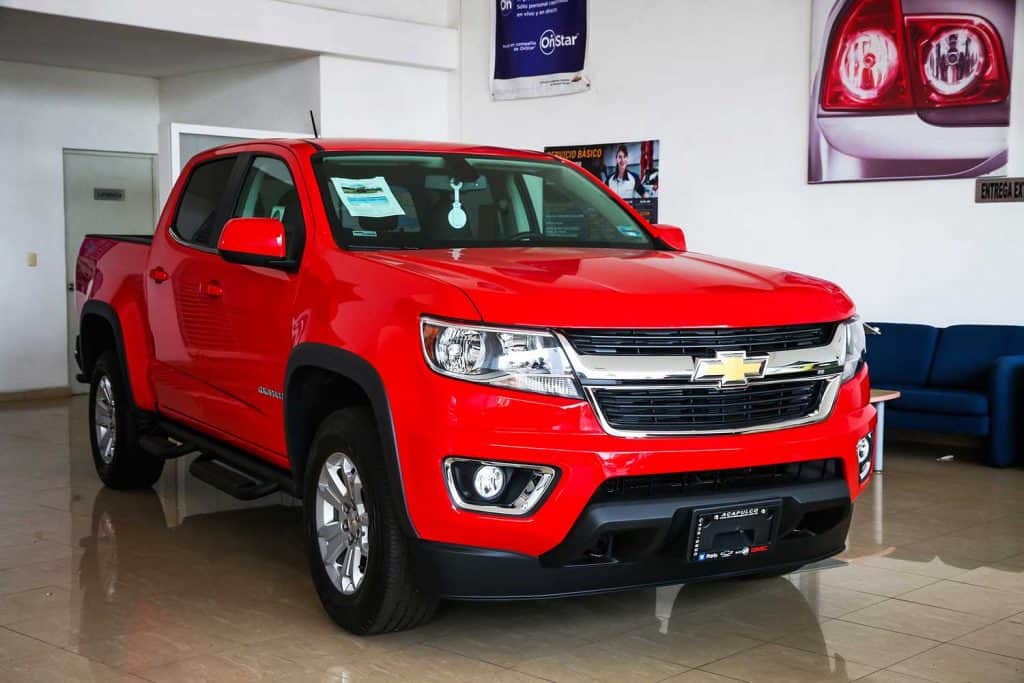
Until recently, Chevy’s smallest truck was a punchline — small, chintzy, and unreliable; it wasn’t on anyone’s list. However, with the redesign of the midsize pickup, it nearly overlaps its Silverado full-size stablemate. But this truck is offered with a full four-door configuration and four-wheel drive. With those options checked, it should do well with Old Man Winter.
Ram 1500
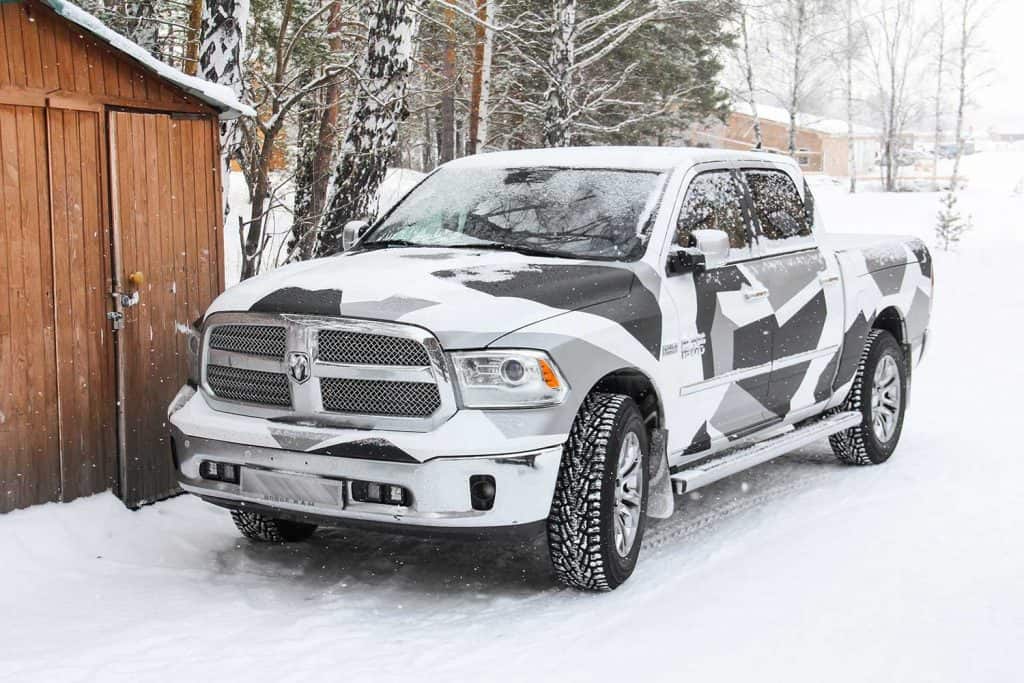
Ram has upped its pickup truck game in recent years, and its current offerings are some of the most lauded in the business. Ram’s latest product has dethroned Chevy’s popular Silverado from its post. The pickup offers the same capability as every other brand while offering its legendary Hemi engines. It also provides a Rebel edition that steps up the off-road game that makes it a solid competitor to the Tundra TRD Pro.
Are Cars or Trucks Best in Snow?
One of the most significant factors that affect the winter prowess of a vehicle is its weight distribution — particularly if the majority of the weight is on the driven wheels. It’s why front-wheel-drive cars enjoy a well-deserved reputation for being useful in inclement weather. However, because most trucks employ a rear-based or rear-wheel-drive layout, it’s hard to see trucks as the clear victor here. But with four-wheel drive trucks, the traction is shared over the four wheels. And in recent years, vehicles like the Honda Ridgeline are inching away from the traditional style of pickup.
Trucks do win when it comes to ground clearance. While no one is going to drive a Corvette in the snow, the truck is the clear winner when vehicles are needed to clear the unplowed snow — particularly if one lives in the rural or back-road property. And lift kits enhance that ground clearance significantly — something you won’t see from a Subaru. It all comes down to what a driver wants from his vehicle.
Is a Two-Wheel-Drive Truck Good in the Snow?
Rear-wheel drive might be a good option for those not suffering from snow six months of the year, but it’s probably not something you want to deal with when the weather gets too problematic. The biggest problems stem from the rear wheels not gaining any traction. When it comes to moving the vehicle, it can be a challenge if you have a severe lack of weight in the back. Of course, rear-wheel-drive can’t be a total no-deal in the snow belt, but drivers need to take precautions, particularly if they have a single cab with nothing in the back. Skilled drivers shouldn’t have a problem keeping a two-wheel-drive truck on the road, but it can still get scary when the vehicle needs to climb icy hills.
Older 2wd trucks, particularly those without any kind of traction control or anti-lock brakes, can be a challenge, particularly for younger drivers. It’s essential to prepare these trucks before winter weather even hits to make sure they don’t get caught in a blizzard with little or no traction.
Are Four-Wheel-Drive Trucks Good in the Snow?
One thing to consider with four-wheel-drive is it only assists in acceleration. So if you’re hoping to stop or change directions, you might be out of luck. Like the two-wheel-drive brethren, the 4x4s could need help in getting the rear wheels to lock up, especially with a single-cab, long-bed configuration.
Driving technique is always important to consider when operating a pickup, whether it’s driven by the rear wheels or all of them. Remember to avoid sudden stops and avoid changing direction too quickly. Allowing plenty of distance ahead is key to preventing any kind of rear-ending accident.
How Much Weight Should You Add to the Truck?
Naturally, the weight distribution in any pickup is heavily tipped in favor of the front. Many are also rear-wheel drive, so the wheels that get the least traction are the ones driving the vehicle. That means adding weight to the bed will result in the best traction in the winter. Drivers should add weight on or as close to the rear axle as possible. Depending on whether you have a ½- or ¾-ton truck, you’ll want to weigh it down between 200-400 pounds, according to an article posted to Lee Schwab.
Sandbags purchased from home improvement stores work well, but there are other options in the aftermarket that works as well. These include water tanks that can sit over the rear axle and are easily reusable. However, heavy, small objects like cinder blocks can become unhinged missiles in the event of an accident. The better these objects can be secured, the more effective they can be in aiding traction, and the safer they’ll be in the event of a wreck.
Should You Put Winter Tires on the Truck?
Tires could be the single biggest factor in keeping a truck out of a ditch on a snowy day. Like every other factor in making a pickup a good snow vehicle, traction is essential. All-season tires might be the best of both worlds; they can’t work wonders in icy or snowy conditions. The compounds harden in cold weather, and they don’t have the necessary tread to cut through the snow.
Consumer Reports tested winter tires vs. all-season, and the winter tires had a 40-foot advantage in the amount of real estate needed to get a truck from 5-20 mph. Good winter tires can cost more than $100 per pop, but they’ll make a very wise investment over the long haul.
If the roads are particularly heinous, drivers might want to consider a set of studded snow tires. As the name suggests, they add small studs or pins to the tread of the tires, giving extra grip on icy roads. The downside is they’re only allowed on the roads at certain times of the year, so be sure to check with state laws.
Conclusion
Discovering which pickup truck suits your winter driving needs can be a broad-reaching question. Still, with a bit of preparation and analysis of driving needs, it’s entirely possible to select a vehicle that will work as a great family hauler no matter the weather.
